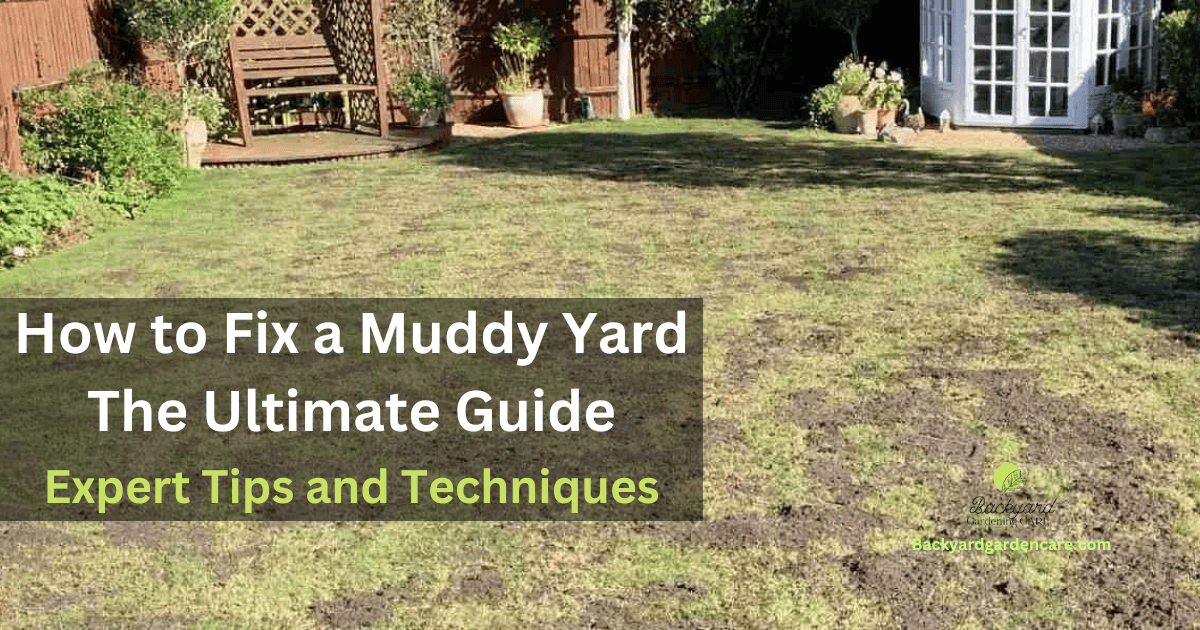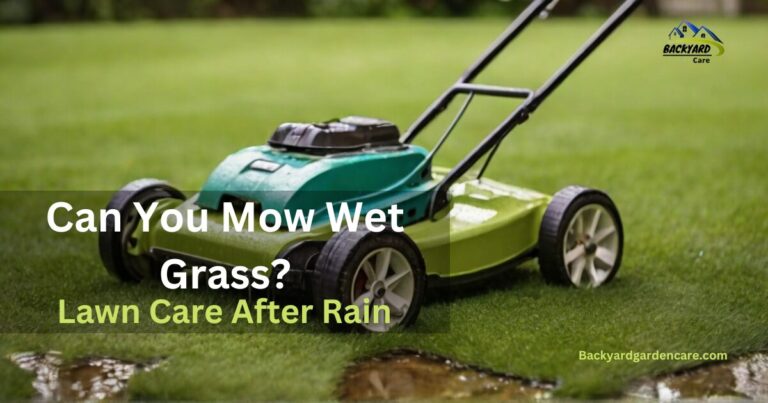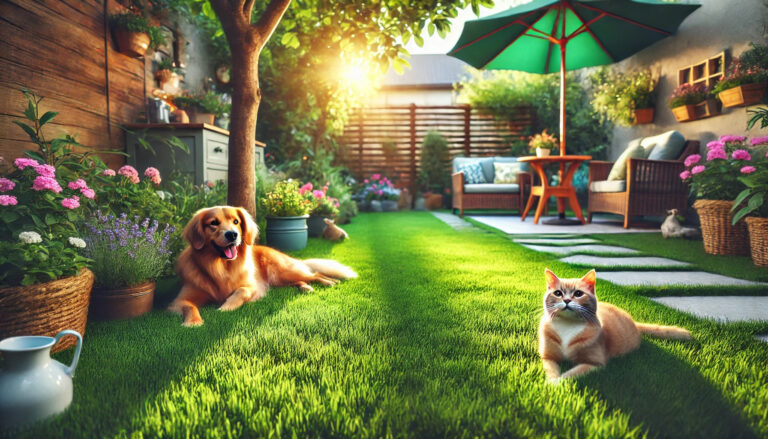How to Fix a Muddy Yard The Ultimate Guide: 6 Expert Tips and Techniques.
The problem of a muddy yard can be frustrating as it can prevent you from enjoying your outdoor space to the fullest extent. A muddy yard can create a messy and unpleasant environment, whether it’s due to heavy rainfall, poor drainage, or other factors.
Luckily, there are steps you can take to fix a muddy yard and restore it to a functional and beautiful space. In this article, we will explore various solutions and techniques for fixing a muddy yard so that you can enjoy your outdoor space to its fullest potential.
So, let’s get started and learn how to fix a muddy yard.
Understanding the Causes and How To Fix a Muddy Yard.
Many homeowners dream of having a beautiful, well-kept yard. However, sometimes, we encounter the frustrating problem of having a muddy backyard. Not only does it make our outdoor space look messy, but it can also create various issues like poor drainage and damaged grass.
To tackle this problem effectively, it is important to understand the causes of a muddy yard. Let’s look into some of the common reasons behind this issue and how to get rid of mud patches in the grass.
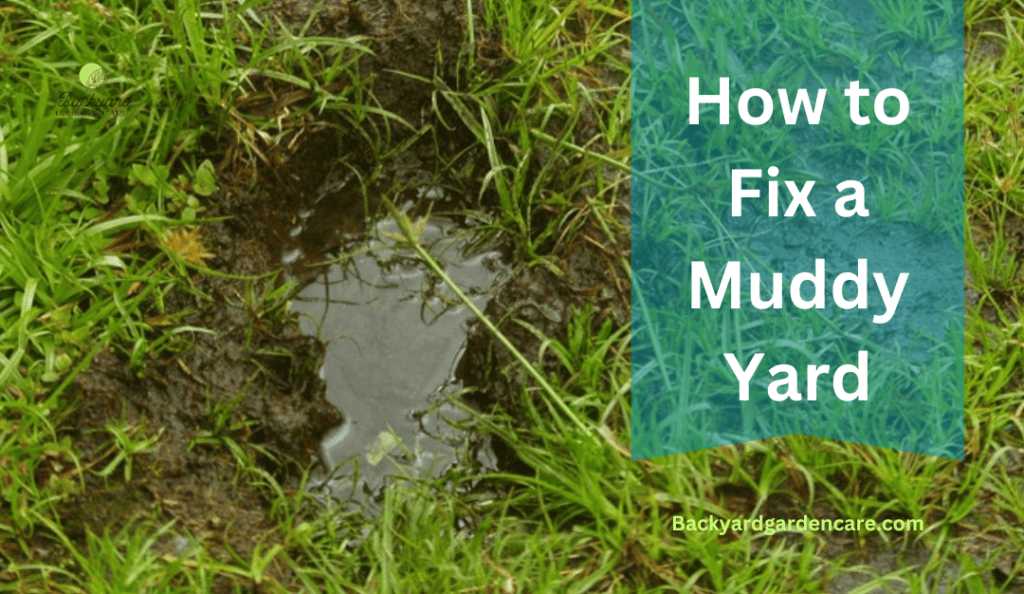
1. Poor Drainage: One of the primary reasons for a muddy yard is poor drainage. When the soil cannot absorb water properly, it accumulates water on the surface, resulting in a muddy mess. This can happen due to compacted soil, clayey soil composition, or insufficient slope on the property, preventing water from flowing away.
2. Heavy Rainfall: Rainy seasons can wreak havoc on your yard, especially if it receives heavy rainfall. When the amount of water exceeds the soil’s capacity to absorb it, the excess water accumulates on the surface, causing a muddy yard. Erosion can also occur, washing away topsoil and leaving behind a muddy landscape.
3. Foot Traffic: High foot traffic, especially in the same area repeatedly, can turn your yard into a muddy mess. The constant pressure from people or pets can compact the soil, making it less porous and more prone to becoming muddy. This is particularly noticeable near entrances, walkways, and outdoor play areas.
4. Lack of Plants: Not sufficient vegetation in your yard can contribute to a muddy environment. Plants, especially grass, absorb water and prevent soil erosion. Without a dense cover of greenery, the soil becomes more susceptible to erosion and water accumulation, making your yard muddy.
5. Underground Issues: Sometimes, the cause of a muddy yard lies beneath the surface. Underground issues, such as broken or blocked drainage pipes, leaking water lines, or faulty irrigation systems, can lead to excess water pooling in your yard. This can result in muddy conditions, even without heavy rainfall.
Now that we have discussed some common causes of a muddy yard, it’s time to address the issue and find solutions. Depending on the specific cause, there are several steps you can take to mitigate the problem.
French Drain
If you’re dealing with a muddy yard that has poor drainage, there is a solution that can help dry it up and prevent future water accumulation. Installing a French drain, a trench filled with gravel or rocks is effective.
The drain also includes a pipe with holes that redirects water from the ground or surface to a desired location, such as away from your yard or garden, also helps you to dry up a wet yard fast. The concept of a French drain is straightforward: water naturally flows downhill and seeks the path of least resistance.
To ensure proper drainage, the gradient of the French drain should have a slight slope of about an inch for every seven to eight feet. This slope should be directed towards the desired flow direction, creating a convenient channel for water to follow.
When water enters the French drain, it first passes through the rocks or gravel, allowing for better filtration and absorption. This helps prevent blocking and ensures the water flows smoothly towards the pipe.
The perforated pipe allows water to enter and then redirects it away from your yard, ensuring that excess water does not accumulate and create a muddy mess. Installing a French drain in your yard can effectively tackle muddy areas and improve overall drainage.
Not only does this help to prevent water accumulation, but it also protects your yard and garden from excess moisture, which can lead to soil erosion or damage to plants. Installed and maintained properly, a French drain is a long-term solution to muddy and dry yard conditions for years.
Lawn Gravel for Muddy Yard
Adding gravel can be an effective solution if you’re dealing with a muddy yard. Not only does it address the issue of mud, but it also enhances the overall appearance of your yard when done correctly. The best part is that this solution is relatively affordable and can be completed on time.
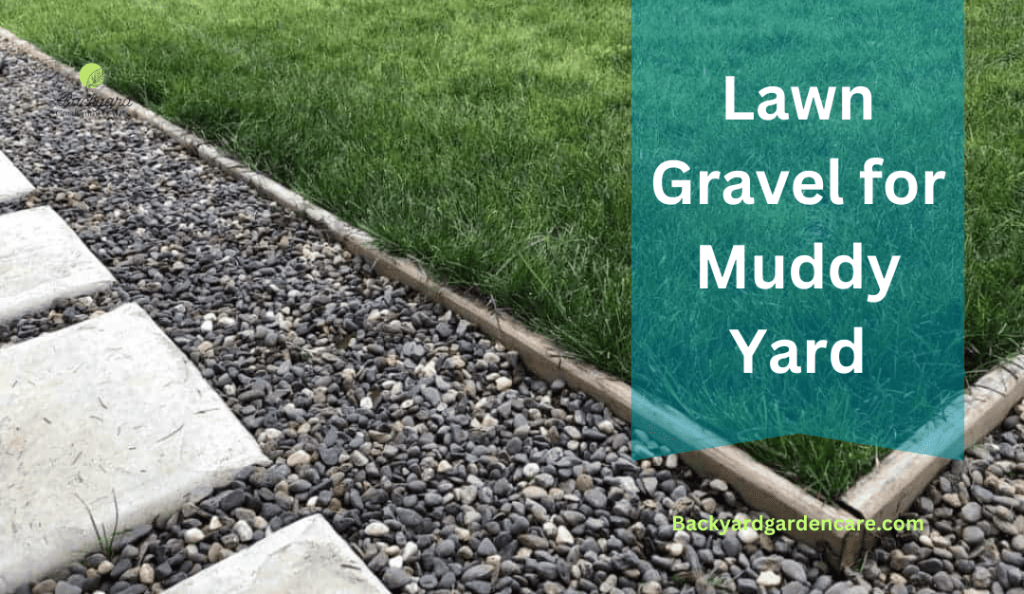
Hiring a professional landscaping company is highly recommended for this job. They have the expertise and experience to ensure the gravel is installed properly and seamlessly integrates with your existing landscape.
One of the key benefits of adding gravel to your yard is the long-term improvement it brings to the structural integrity of your outdoor space. With better drainage, the soil underneath will be less saturated, reducing the risk of soil erosion and potential damage to your yard.
To further enhance the overall resilience of your yard, it’s essential to install the proper drainage to also control bugs coming out from the drainage, ensuring a more enjoyable and bug-free outdoor experience.
This is particularly beneficial for areas that experience heavy rainfall or have poor soil drainage.
When choosing the type of gravel for your yard, consider factors such as size, color, and texture.
Larger gravel stones are ideal for areas with heavy foot traffic, as they provide better stability. Additionally, selecting a color that complements your existing landscaping can greatly enhance the visual appeal of your yard.
Before the gravel is laid down, it’s important to prepare the area properly. This may involve removing existing vegetation, leveling the ground, and adding a layer of landscape fabric to prevent weed growth. Once these steps are completed, the gravel can be spread evenly over the designated area.
Spread Mulch: Temporary Fix for Muddy Yard
Using Black mulch can be a great option if you’re dealing with a muddy yard and looking for an affordable muddy solution. Not only is it cost-effective, but it can also serve as a temporary fix until you have the time to implement a more long-term solution. Finding the right balance is important when using mulch to address a muddy yard.
While you don’t want to make the layer of mulch too thick, it should still be sufficient to keep the mud at bay. This will help create a barrier between the ground and any foot traffic, preventing the mud from being tracked into your home. However, it’s important to note that mulch is not a permanent muddy yard solution.

Over time, it will decompose and wash away, leaving you with a muddy yard again. Therefore, having another solution lined up for the future is crucial. While mulch can be a great temporary fix for muddy yard, other long-term options should be considered.
For instance, you might want to explore installing a proper drainage system or grading your yard to ensure proper water flow. These solutions can help address the root cause of the muddy yard and prevent future occurrences.
Make a Creek Bed
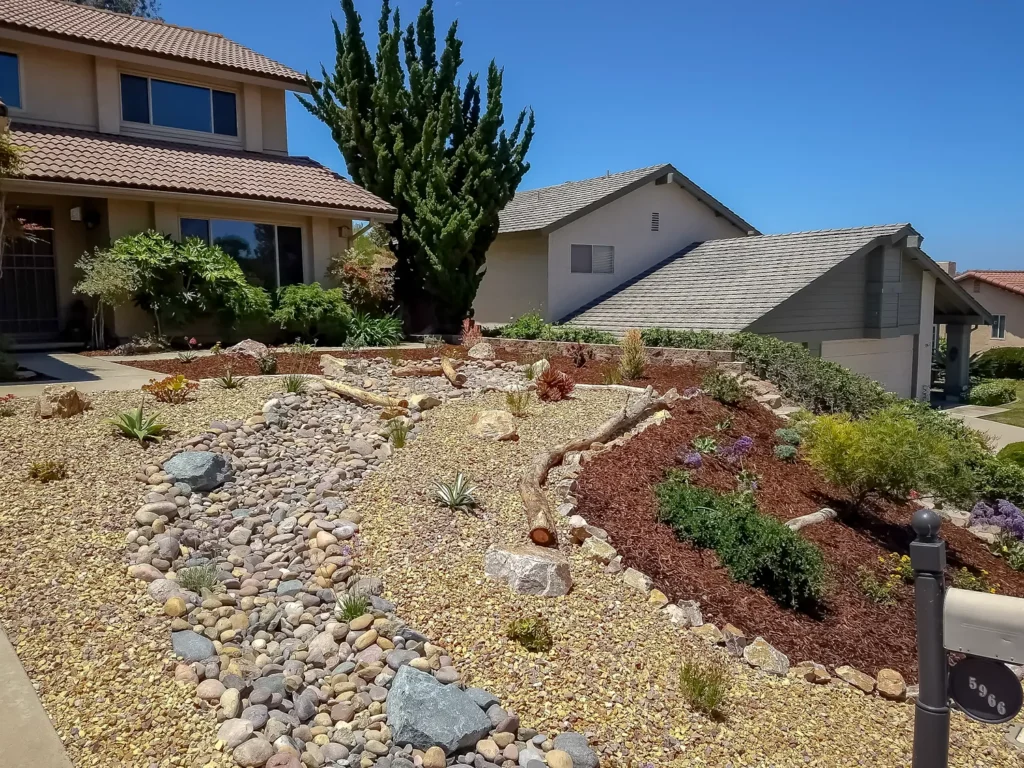
Building a dry creek bed is a great option if you’re dealing with a muddy yard and looking for a long-term solution. While it may require some time and effort. To start building a dry creek bed, the first step is to dig out a ditch in your yard.
The size and shape of the ditch will depend on the layout of your yard and the amount of water you need to divert. Once the ditch is dug, it’s important to line it properly to ensure water flows smoothly through the creek bed.
Building a dry creek bed typically takes a couple of days or more, depending on the complexity of your yard and the materials you choose to use. However, in some cases, it can be completed in less than a day if the layout of your yard is simple.
You’ll need various supplies and materials to build a creek bed. The landscape fabric lines the ditch and prevents weeds from growing through the creek bed. Rocks or stones are then placed in the ditch to create a pathway for the water to flow.
Moreover, sand can be added between the rocks to enhance the overall appearance and stability of the creek bed. Once the dry creek bed is built, it is an effective drainage solution for your yard.
It helps to redirect water away from problem areas, preventing the formation of mud and puddles. Moreover, it adds a beautiful and natural element to your landscape design, enhancing the overall aesthetics of your yard.
Lime for Muddy Yard

Lime is an excellent solution for tackling the issue of a muddy yard. Not only is it a quick and effective fix, but it is also an affordable option. You can easily order lime from landscaping or construction companies in your locality without breaking the bank.
In fact, many builders prefer using lime as their go-to solution for resolving muddy yard problems. The best part is that lime can be deployed swiftly, eliminating excess water quickly. However, it is crucial to emphasize the importance of professional services when working with lime.
While lime can be highly effective in treating muddy yards, it can also be dangerous in the hands of someone inexperienced. Therefore, it is recommended to seek the assistance of professionals to ensure the safe and successful application of lime in your yard.
Improve Your Drainage System
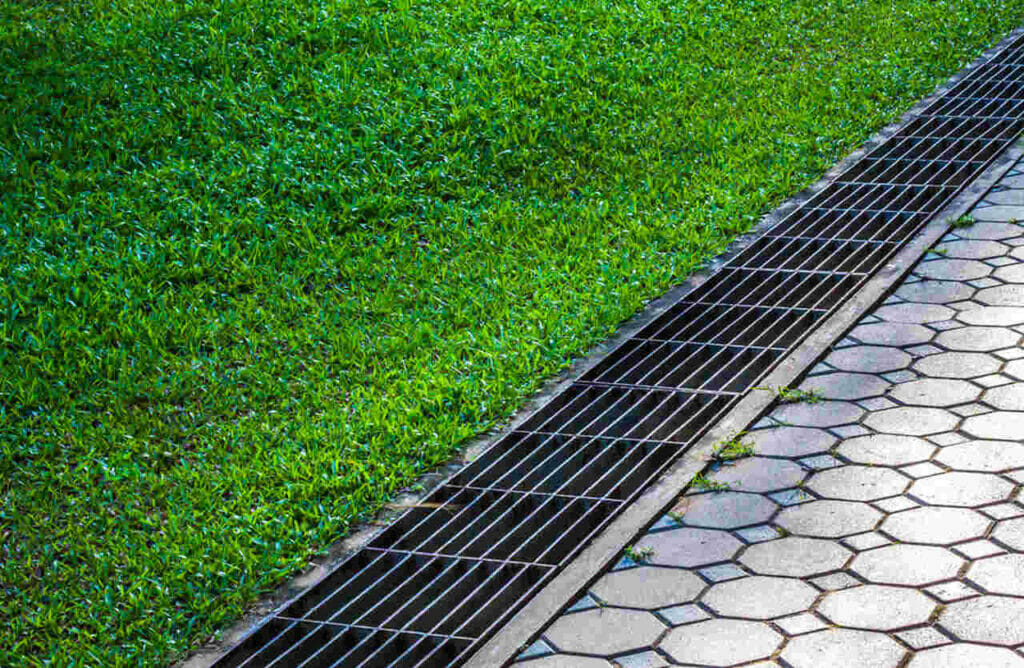
Poor drainage is one of the main causes of muddy yards, and I can attest to this from personal experience. Ensuring the water drains properly through a separate drainage pipe is essential. If that doesn’t happen, your entire yard will become muddy. In fact, I remember the time when heavy rains turned my once beautiful lawn into a quagmire, and it wasn’t a pleasant sight.
My neighbor, who faced a similar issue, also chimed in with his opinion on the matter. He advised, “I had the same problem last year, and it was a nightmare. My yard resembled a swamp after every rainstorm. I decided to address the issue promptly. I cleared the drainage area of plants and made sure there was no runoff in the yard. I even considered grading to improve the overall drainage.”
In addition to fixing the drainage system, my neighbor continued, “I did some grading work, redistributing the topsoil to create a more even surface. I took the topsoil from the lower side of my lawn and applied it to the higher side. This leveled out the ground and significantly improved the overall drainage of my yard. Now, I don’t have to worry about muddy yards ruining our outdoor enjoyment.”
So, from both personal experience and my neighbor’s perspective, it’s clear that addressing poor drainage is essential to maintaining the beauty and functionality of your yard. Don’t let muddy yards deter you from enjoying your outdoor space. Remember, prevention is always better than cure.
Regular maintenance and implementing preventive measures can help you get rid of stickers in the yard altogether. By identifying the causes and taking appropriate action, you can restore your yard to its former glory and create an outdoor space you can enjoy all year round
Conclusion.
Fixing a muddy yard requires a combination of proper drainage, soil amendment, and regular maintenance. By addressing the underlying issues causing the mud, such as poor grading or compacted soil, and implementing appropriate solutions, such as installing a French drain or adding organic matter to improve soil structure, you can transform your yard into a healthier and more functional outdoor space.
Remember to continually monitor and maintain the drainage system and implement preventive measures such as redirecting downspouts and avoiding overwatering. With patience and persistence, you can say goodbye to a muddy yard and enjoy a beautiful, lush landscape.
FAQs
Why is My Yard Always Wet and Muddy?
There could be several reasons why your yard is always wet and muddy. Some possible causes include poor drainage, excessive rainfall, or a high water table. It is recommended to consult with a landscaping professional or a drainage specialist to assess the specific conditions of your yard and provide appropriate solutions.
How to fix a Muddy Lawn in Winter?
To fix a muddy lawn in winter, there are a few steps you can take. First, identify the cause of the mud, such as poor drainage or heavy foot traffic. Improve the drainage by adding organic matter, installing a French drain, using lime, or creating a creek bed. Avoid walking on the lawn when it is wet to prevent further compaction.
What is the Best Way to Dry Up a Muddy Yard?
The best way to dry up a muddy yard is to improve the drainage. Start by filling in any low spots with soil and leveling the surface. Consider installing a French drain or a series of trenches to redirect excess water away from the yard.
You can also aerate the soil to improve its ability to absorb water. Avoid overwatering the yard and ensure that downspouts and gutters are directing water away from the yard.
How Do You Fix a Muddy, Soggy Yard?
To fix a muddy, soggy yard, there are a few steps you can take. First, improve the drainage by creating trenches or installing a French drain system. Next, aerate the soil to allow for better water absorption. Improve soil structure by adding organic matter, such as compost. Lastly, consider redirecting downspouts and installing gutter extensions to prevent excess water from pooling in the yard.
Albert Phipps

Hello, I’m Albert Phipps, your trusted professional gardener. I have a deep passion for nurturing nature’s beauty, With years of experience in landscaping. I’m dedicated to creating lush, vibrant gardens and outdoor spaces.
If you’re seeking guidance on plant selection, grass care, pest control products, garden design, or lawn maintenance tips, don’t hesitate to get in touch. I’m here to help you transform your outdoor space into a thriving and serene landscape.

